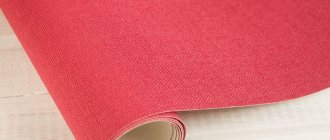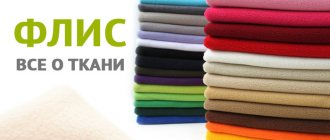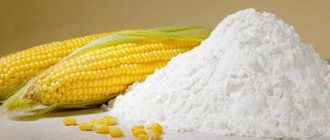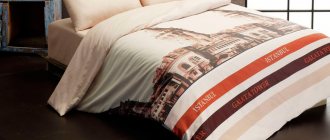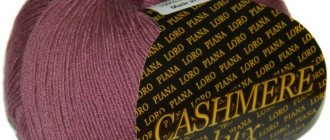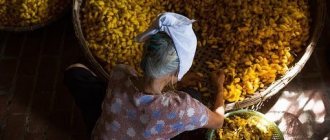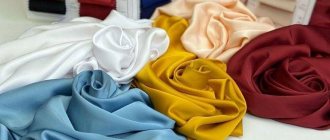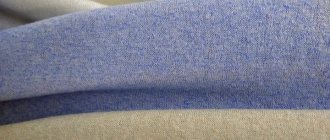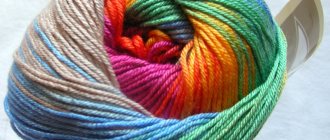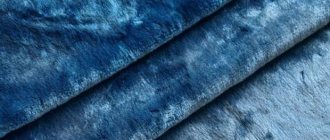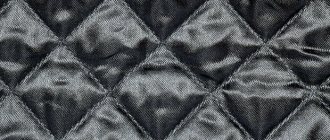DescriptionOrigin
Dralon has some similarities with natural wool, however, unlike natural wool, dralon is considered a more practical and less maintenance-friendly material.
Dralon is a chemically produced synthetic fabric. The basis for the creation of this material is hydrocarbon raw materials from which ultra-strong acrylic threads are made. Dralon fabric has a dense, pleasant texture. The color palette of this material is very diverse. The surface is always plain, without prints or designs.
Dralon is made from hydrocarbon raw materials, which are treated with complex chemicals at high temperatures, producing thin and durable acrylic fibers. Then the resulting synthetic threads are dyed, dried, and then woven in a simple linen manner using a loom. To enhance strength and wear resistance, the material undergoes heat treatment and is also impregnated with a special Teflon solution. Teflon impregnation makes the fabric inert to dirt and getting wet.
The manufacturer and patent holder for this artificial material is the German company Bayer, which first began producing it in the late 80s of the last century. This type of textile is widespread in many different countries, however, in many places it is called differently. Thus, in the USA, dralon is called orlon, and in Japan - cashmilon.
Today, this type of textile is produced not in its homeland, Germany, but in Spain. The high cost of such material is due to the complexity of the production process, which is quite labor-intensive and time-consuming.
What kind of fabric
So what is dralon? Dralon is a strong, heat-resistant acrylic fiber that can be found in many types of yarn.
Polyacrylonitrile fiber is obtained from acrylonitrile, as well as its copolymers. The process of producing dralon from acrylic fiber occurs using the polymerization method.
Initially, dralon goes through a molding stage, after which the fibers are drawn out on a spinning machine. After this, they are washed from the solvent and painted. Next, the dralon is dried to fix the coloring matter. To increase the thermal properties of the fibers, resistance to abrasion and deformation, heat treatment is carried out. Also, their interaction with heat allows for less shrinkage.
Compound
Dralon is based on acrylic, which makes it stable. Additional properties of “strength” are provided by threads that have similar qualities. Due to the use of threads of different colors, the fabric has unsurpassed color fastness and brightness.
Typically, this fabric consists of 70% synthetic polyacrylonitrile fiber. The remaining 30% includes various natural or synthetic fibers.
Depending on the methods of making fabrics, you can get completely different materials: orlon, acrylan, cashmilon, kurtel, volprulla. Of course, their chemical and physical properties are different. It is difficult to buy exactly dralon in stores, since it is often called “nitron”.
Types and their properties
Dralon fabric, depending on the fibers included in it, has different characteristics and features. In fact, dralon fabric was designed with a focus on quality performance.
Varieties of dralon yarn:
- produce pure 100% dralon “NEON FINE”, which has about 10 colors. But many factories do not limit themselves to producing 100% dralon. They produce other blended fabrics containing linen, wool or cotton, for example;
- for example, “Boom fine” yarn, which contains 50% wool and 50% dralon. Due to the inclusion of dralon (acrylic fibers), items made from this yarn are soft, hold their shape well and retain heat;
- There is another type of yarn, which contains 51% merino wool and 49% dralon - this is “BOOM FINE” wool blend.
The more flax in the structure, for example, the more similar the material is to natural fabric. As a rule, such fabrics are used not only for the interior of the house (upholstery), but also on the streets.
Usage
Dralon material can be used both in pure form and in combination with other fabrics. Thus, the fibers of this textile are often combined with cotton, wool or linen, creating mixed fabrics that are used in the manufacture of garden and garden furniture, awnings and tourist tents. Dralon is used in the manufacture of:
- furniture upholstery and furniture covers;
- home decor - pillowcases, bedspreads;
- curtains, drapes and window curtains;
- underwear;
- baby blankets
By combining this artificial fabric with other materials, warm and wear-resistant jumpers, cozy dresses, turtlenecks and sweaters are made. Also, toys for children and decorative elements in the form of stripes on backpacks or bags are made from dralon.
Advantages
Dralon has advantageous characteristics for the consumer: the fabric is resistant to abrasions and is easy to care for (contamination is easily removed).
- It is resistant to thermal influences and practically does not lose color (brightness).
- Not electrified.
- Due to Teflon impregnation, the fabric is endowed with “immunity” to water, grease and other dirt.
- Dralon is resistant to solvents with an organic composition (acetone, gasoline), weak alkalis, certain groups of acids (highly concentrated) and mechanical damage (does not stretch much, does not shrink, does not wrinkle);
- Hypoallergenic;
- Antibacterial (there are no living conditions for mites, fungi, moths and other microorganisms);
- Wear-resistant and durable;
- The material is practically not destroyed during operation.
Advantages and disadvantages
Dralon fabric was specially developed so that it has as many positive performance qualities as possible, so this type of textile has many advantages.
Pros:
- breathability;
- hygroscopicity;
- hypoallergenic;
- resistance to deformation and destruction of the canvas under the influence of ultraviolet rays;
- antibacterial;
- resistance to organic solvents and weakly alkaline solutions;
- wear resistance and durability;
- strength;
- resistance to dirt and wetness;
- thermoregulatory properties;
- lack of tendency to accumulate static electricity;
- resistance to mechanical stress on the surface and fabric thinning;
- softness;
- ease of care.
Minuses:
- high price;
- can be destroyed under the influence of formaldehyde and phenol;
- the need to regularly clean the surface, as a soft surface attracts dust.
Application area
Acrylic fibers are widely used to create blended fabrics. Thread is present in many household items, for example: swings, curtains, textile bedspreads, knitted blankets, decorative pillowcases.
Today, knitting yarn with the addition of dralon is in great demand, as it has proven itself well in the market. Products made from this yarn are of no less interest to girls. For example, a dress (item 3522). It contains 50% wool, 50% dralon. Jumpers with a similar composition – 50% wool, 50% dralon – are highly popular.
In fact, dralon is not a “capricious” material, which is why it is often used for the production of furniture (upholstery). Products with such upholstery are resistant to damage, are easy to clean and do not lose color.
Due to the softness of the products and the absence of fluff on them, acrylic yarn is used for knitting children's clothes. In addition to clothes and blankets for babies, toys are knitted from this yarn.
Dralon is also used to make blankets and rugs. For example, a tweed dress or jumper. This material is exquisite, easy to care for, does not wrinkle, and has many other advantages.
All about yarn
Alpaca (Alpaca) - Alpaca, or llama, is an animal of the camel family. The qualities that appear to us when defining “camel wool” are largely applicable to alpaca wool. Alpaca wool is highly prized. And therefore, and also due to its characteristics (wool is very hard), it is rarely used in its pure form. The benefits of alpaca wool are most evident in blended yarns. Blends with regular or merino wool and artificial fibers (for example, acrylic) are widespread. Soft and delicate alpaca is not only an exquisite yarn, but also very warm. Alpaca fibers are hollow inside: they retain air and provide a thermal insulation effect. Due to the fact that the individual wool fibers are long, alpaca wool does not mat and practically does not form pellets. The color range of alpaca wool is quite wide; about 20 shades can be distinguished - from pure white, traditional beige or silver - to brown and even black. A special feature of alpaca wool is that naphthalene cannot be used during its storage, and therefore only natural remedies are used as anti-moth products - lavender, tobacco and cedar.
Angora yarn is made from the down of Angora rabbits; it is very fluffy, soft and warm. In its pure form, angora is practically not used - it is expensive, and the fibers in the yarn, due to their softness and smoothness, do not hold well, the yarn sheds. But angora is just perfect when mixed with wool, merino wool or acrylic. The product is light, warm, soft and pleasant to the touch. Angora yarn is very light, so for a product of size 42-44 you need 200 - 250 g. Care instructions: careful hand wash with special detergents, dry the product on a horizontal surface in a straightened state.
Bamboo Bamboo fiber is a type of viscose, but not from pine wood, but from bamboo. Bamboo fiber is softer than cotton and has a silk-like quality. It is very durable and has good wear resistance. In addition, bamboo fibers have a porous structure, due to which moisture is instantly absorbed by the canvas and evaporates. A knitted product made from bamboo yarn gives the body coolness and comfort in the hot summer, does not lose its original color and does not change size when washed. Bamboo fabric does not cause irritation and has natural antimicrobial properties, as it contains a component that prevents the growth of bacteria. Bamboo thread has a slight shine, so it looks more noble than cotton. Bamboo yarn is produced both homogeneous in composition and mixed with cotton, polyamide, acrylic, and wool.
Care
This material is completely unpretentious in care. As mentioned earlier, the fabric is resistant to various stains. In order to remove a minor stain, you just need to wipe it with a damp cloth.
In order for a dralon item to last as long as possible, you should follow some simple rules indicated on the label:
- The product with the addition of dralon can be washed both by hand and by machine wash.
- The maximum washing temperature is 30 degrees.
- You can squeeze it not only with your hands, but also in a washing machine.
- It is recommended to dry dralon items without using mechanical influences. That is, the product must be dried in natural conditions.
- Only items made from the above material should be loaded into the drum of the machine. Other products must be downloaded separately.
- You can resort to dry cleaning services.
- If an item is dirty and it is not possible to remove it (a chair or sofa cover), you should first vacuum it and then wipe it with a slightly damp cloth.
- To remove individual stains, you can resort to the following method: moisten a cotton pad in warm water and, starting from the edges to the center, use gentle movements to reduce the stain to a minimum size.
- The fabric should only be ironed through a protective coating or damp gauze. In this case, the iron setting must be set to “nylon”.
If you follow these simple recommendations, then a product made from dralon can serve for many years in a row.
Dear readers of the Tkan.Club website, if you still have questions on this topic, we will be happy to answer them. Leave your reviews, comments, share stories if you have dealt with this fabric! Your life experience may be useful to other readers.
